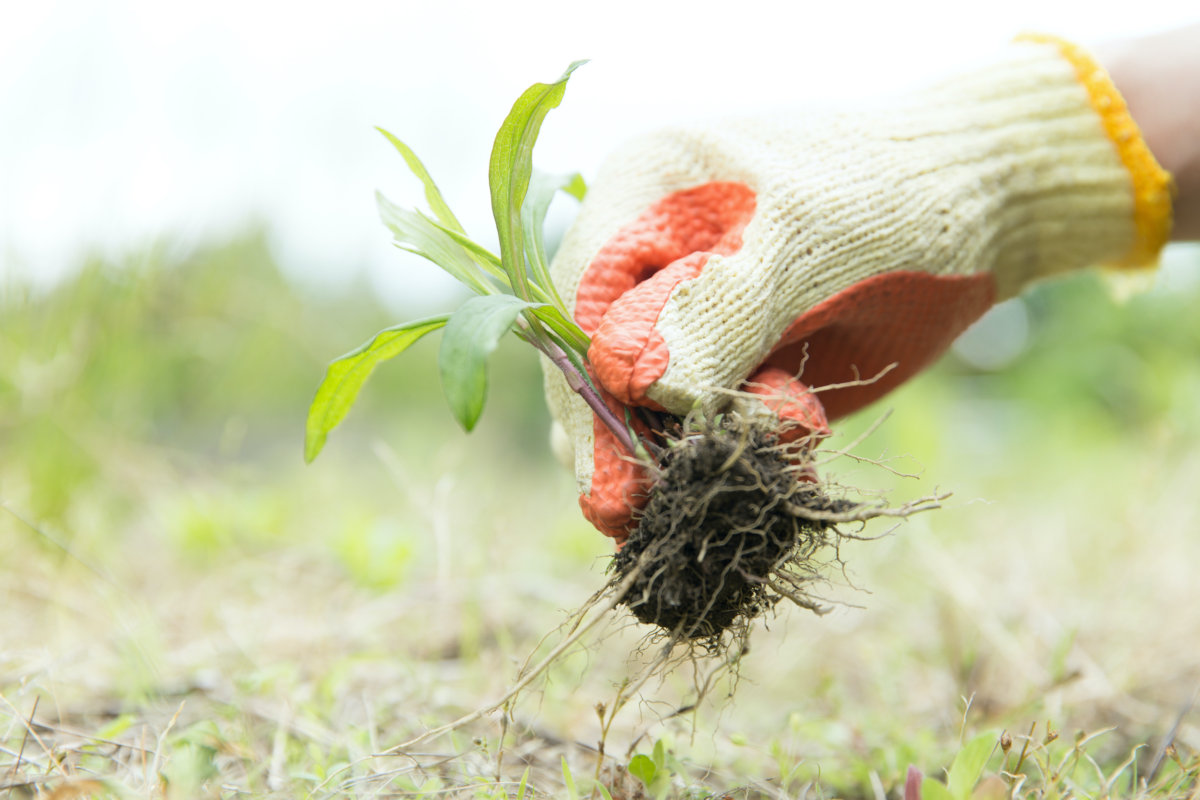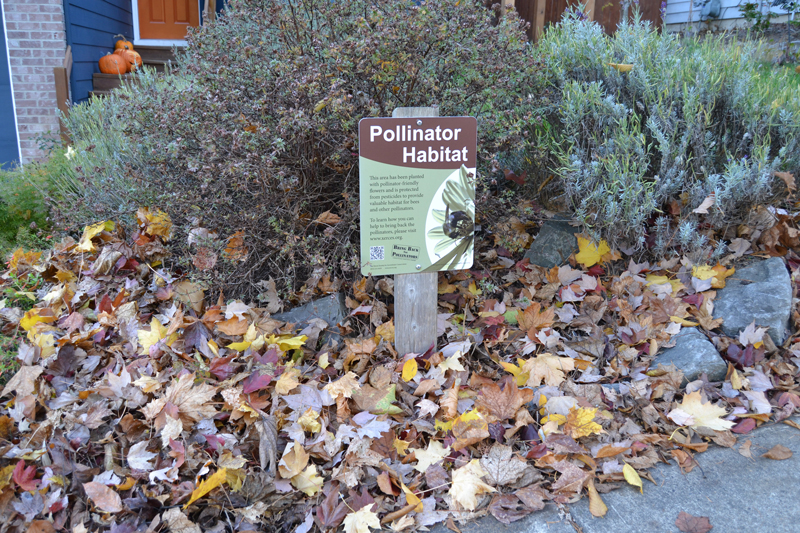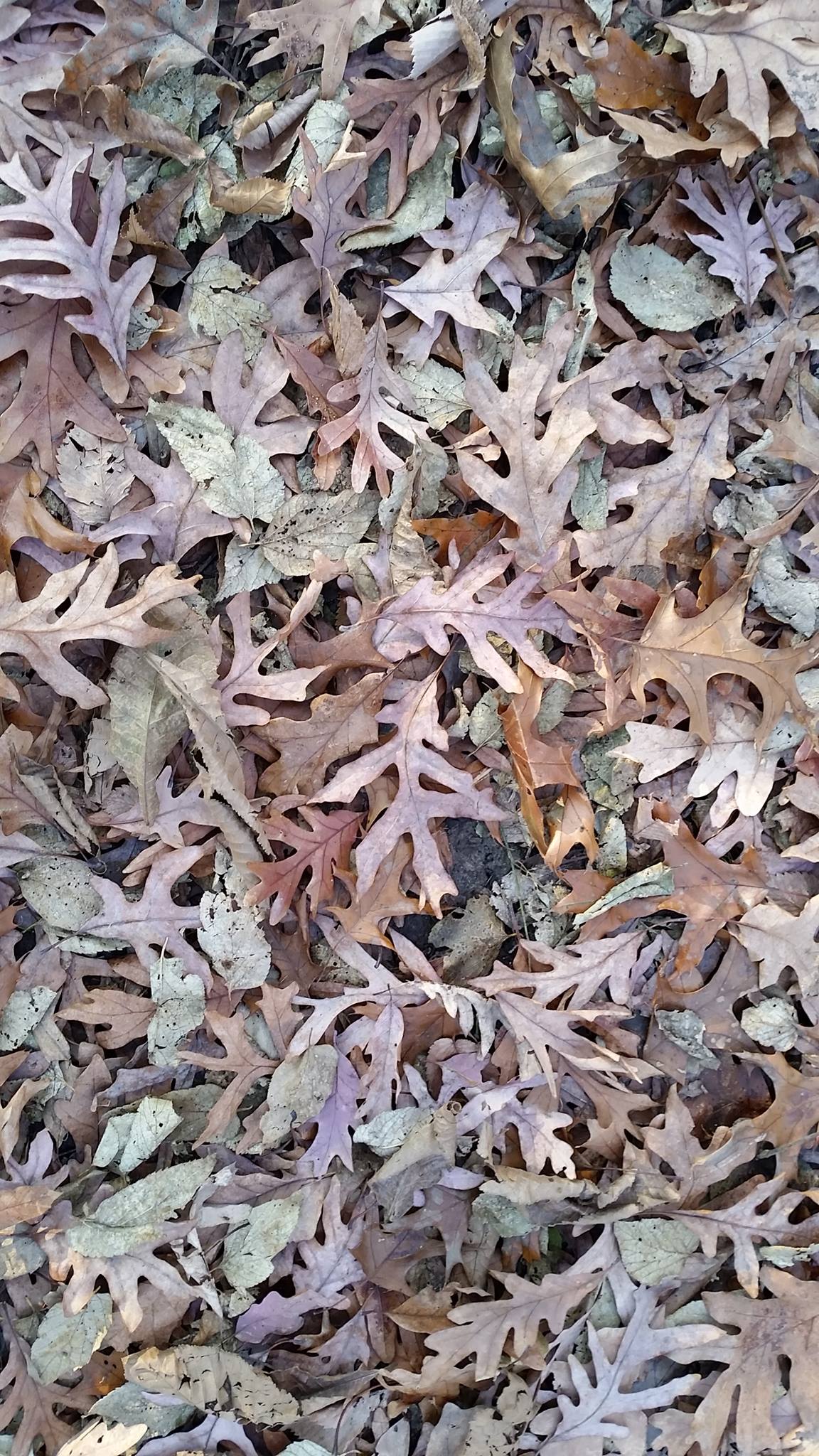
If you pull weeds in winter, it is easier to get the entire root. You will create space for plants that bees and other pollinators like. And you will have fewer weed problems later in the season, so you can reduce or eliminate your use of weed killers.
In Harmony uses natural methods to support pollinators in our clients’ landscapes. For example, we favor landscape designs that include plants that attract pollinators, and our natural lawn, tree and shrub care services help landscapes stay healthy so our clients won’t resort to using pesticides.
The work we do to create healthy landscapes won’t be enough to support pollinators without a partnership with our clients. We encourage our clients to join us in protecting pollinators in their lawns, gardens and landscapes. Please consider taking the Bring Back the Pollinators Pledge.
We enjoyed a recent blog post by Aimée Code of the Xerces Society about how she is helping pollinators in her garden in winter. In summary, here is what Aimée is doing now to help pollinators:
- Plant seeds for plants that provide food for pollinators
- Pull weeds so they won’t crowd out desirable plants
- Deter pests so she won’t need to spray or take other steps to control them later
- Leave wild spaces in her yard to provide shelter for pollinators
We are reprinting Aimée’s blog post here for your enjoyment.
“It is mid-winter here in the Pacific Northwest and I’m cozily ensconced in my living room watching a steady rain come down. Once the rain slows, I will don my muck boots, grab a few tools and go play in the garden.
Winter seeding
Even in January there are small actions I can take to support pollinators. Last weekend, I used the unwelcome but increasingly common warm weather to plant seeds that my father-in-law collected from his yard (his holiday gift to me). While not all seed can be planted during colder months, White Brodiaea, also known as Fool’s Onion (Triteleia hyacinthina), supposedly can be planted at almost any time. I only planted some of the seed as an experiment. If successful, in a few years the bees in my garden will have a new source of late spring forage. The other seeds, including with selfheal (Prunella vulgaris) will have to wait. I’ll use that to overseed my “lawn” this spring, in quotes as the patch of grass is interspersed with clover, English daisy and violets.
Easy weeding
Winter is a good time for some basic maintenance tasks to help prevent pest pressure in my postage stamp vegetable and pollinator gardens. First up, getting ahead of the weeds that crowd out desirable plants. The warmer temperatures that allowed me to plant are also allowing the weeds to flourish. Since the ground is moist but not saturated, weeding is relatively easy (I can actually pull out dandelion roots) and none of the weeds have set seed, which means if I pull them now, I won’t have as many weed to contend with later.

While winter gardening conditions vary around the world, it can be a productive time to upkeep your pollinator garden. Some items, like pruning and “do nothing” on wild areas and nesting sites, can be successful anywhere. (Photo: Matthew Shepherd / Xerces Society)
I’ll admit, my tolerance for weeds is pretty high. That said, my neighbor works hard to avoid weeds so I spend extra time removing weeds that could spread to her yard. I also prioritize weeding in my pollinator garden as I don’t want less desirable plants to crowd out the many native plants that attract bees and butterflies to my yard. Fortunately, I don’t have to weed my vegetable garden as last October I planted field peas as a cover crop and that seems to have suppressed most of the unwanted plants from filling the space.
Deter indoor ants and other pests
Another task on my “to do list” is to deter ants from entering my home. My neighborhood is well known for nuisance ants. While I like having ants in my yard where they help aerate the soil and improve drainage, I do want to keep them out of my pantry. To do this, I’ll trim shrubs back at least a foot from the siding. This simple step removes a direct route for ants to enter my home since branches won’t be touching the house. I also avoided planting flowers that attract ants (e.g. clematis, peony and rose) next to my home. The last task on my list is to prune the grape, something I’ll do a few times throughout the year to increase yield and ensure there is enough airflow so powdery mildew doesn’t get a foot hold.
Leave wild spaces for the “wee folk”

One of the most valuable things you can do to support pollinators and other invertebrates is to provide them with the winter cover they need in the form of fall leaves and standing dead plant material. This bit of nature is essential to the survival of moths, butterflies, snails, spiders and dozens of arthropods. (Photo: Deborah Seiler/ Xerces Society)
There won’t be any work to do in my side yard as I leave that area pretty untamed. There is an old rhododendron as well as asters and goldenrod that need little care to thrive. There are also some bare spots that I leave to entice ground nesting bees. When I enter this space I can hear my mom telling me about my great grandmother Henrietta Waugh who taught my mom to “leave wild spaces for the wee folk.” Maybe the pollinators are the wee folk my great grandmother was referring to but I’m pretty sure her thoughts were of a magical bent. She was Welsh, after all.
Each of the projects I am undertaking – planting flowers, avoiding chemical pest management and leaving undisturbed natural areas for pollinator nesting – are part of Xerces’ Bring Back the Pollinators Pledge, an easy and fun way to help conservation. The fourth step in the pledge is to engage others in the effort. To that end, like my father-in-law, I too save seeds that I share with friend and neighbors. My family laughs at me but I get a little thrill each time I visit a friend’s home and see plants that came from my yard. See for yourself, take the pledge and spread the word (and the flowers).
To learn more about home gardening and pollinator conservation check out some of our resources:
- Fact sheet: Smarter Pest Management: Protecting Pollinators at Home.
- Webinar: Your insect Allies: Meet the Beneficial Insects Controlling Pests in Your Garden
- Webpage: Reducing Pesticide Use and Impacts

Trackbacks/Pingbacks